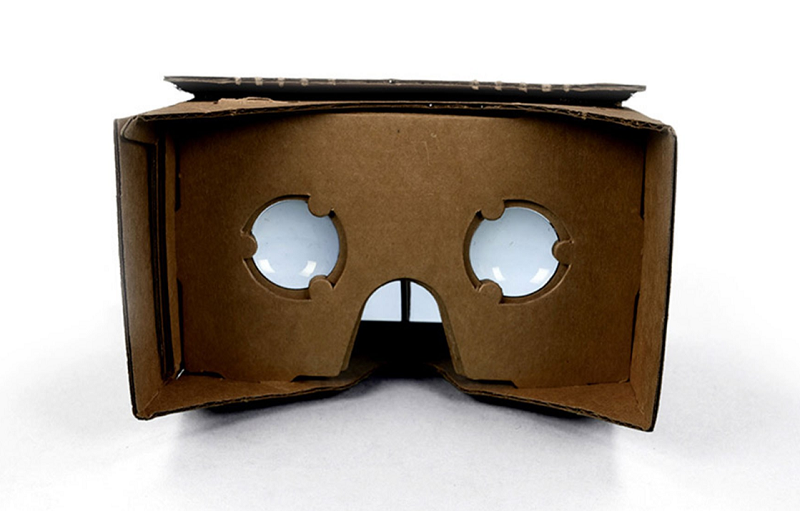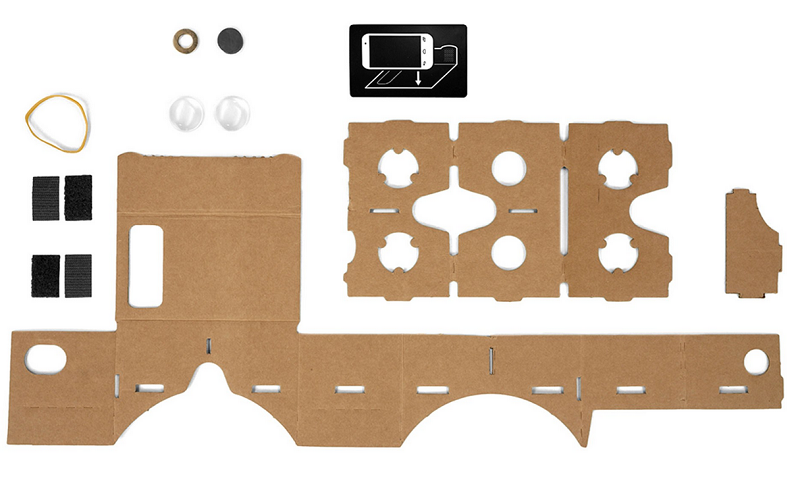
When reading the topic “cardboard virtual reality glasses,” I did the kind of double take normally reserved for spotting acts of delinquency. In what may in fact be some sort of elaborate jab at Facebook’s acquisition of Oculus, Google has just announced the Google Cardboard, an experimental project that allows developers to stitch together various odds and ends to build a poor man’s VR goggles. I mean, poor man’s VR goggles are better than no VR googles, no? After all, it’s going to be a long while before anyone outside the development community can get their hands on Facebook's Oculus Rift or Sony’s Mobius.
So, without further ado, let’s break it down: Google Cardboard is actually a combination of an Android app called Cardboard, which produces the actual video feed, and a pair of homebrew goggles that you build yourself. Outside the cost of materials, everything else is free.

The goggles are made from corrugated cardboard (Google recommends a pizza box’s worth), a pair of lenses with a 40-mm focal distance, two magnets that act as hardware buttons, some Velcro strips, a rubber band, an optional NFC tag, and an Android phone. Putting all these things together requires an X-Acto knife or some precision knife, scissors, a ruler, and glue.
Essentially, the headset functions as a holster for the phone which in turn is responsible for producing raw video feed. Viewing the feed through the lenses emulates the sort of three-dimensional 360° effects seen in the Oculus Rift. It’s no Oculus Rift, but the solution is significantly less costly than a pair of Rifts, and functional enough for use in any implementation that’s not heavily reliant on video graphics. Better yet is the fact that Google Cardboard was designed on a whim; it can almost be said to mock Facebook for having spent $2 billion acquiring Oculus Rift when Facebook could have accomplished a similar low cost implementation.
“Virtual reality has made exciting progress over the past several years. However, developing for VR still requires expensive, specialized hardware,” Google says on the project website. “Thinking about how to make VR accessible to more people, a group of VR enthusiasts at Google experimented with using a smartphone to drive VR experiences.”
Head over to Google Cardboard’s official page to download the app, the software developer’s kit, or the design files to help you cut out the cardboard shape. Google has graciously provided a few “experiments” or demos, if you will, to showcase Cardboard’s capabilities. The “Bears in Kamchatka” presents a 360° view of bears bathing in a river from an aerial focal point moving downstream.
It’s unclear whether Cardboard is a long-term business move or some intricate ruse. The one thing that is certain is the Google can leverage its enormous Android user-base (if it so chooses) and sprint up the ladder to enter the VR game at the same stage as Facebook and Sony. The open-source nature of Cardboard may ensure a reasonable amount of VR software will already have been produced by the time Oculus Rift and Mobius are even released.
Via Wired
Advertisement
Learn more about Electronic Products Magazine





